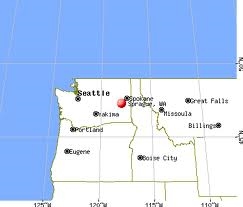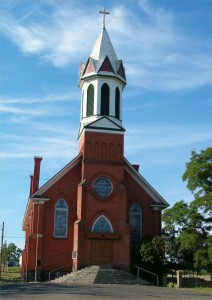Pat and I Are Not Related–Yet
The first half of this post is Pat’s, the second half is Judy’s
The Salt name is not an easy one to research, as you might imagine. Salt Lake City always comes up when you search. As does salt lick, salt mine, and salt as a commodity, There is an English village called Saltaire that has a website and forum and Saltair Ohio, which does not. It was on the Saltaire forum that I ran across someone who might be a cousin I hadn’t heard of before, and she is in this country. The connections in England are very unclear in my database and, I think, for many other Salt researchers in this country. There is no direct connection yet to Saltaire in England, although many wish there was, since it was a planned town built by Sir Titus Salt in the mid to late 1800s. We’re always intrigued by maybe being related to someone with a title! But in this case it would have to be a collateral line and back at least several generations. In fact, it is unsubstantiated at this point that my emigrant ancestor, Edward Salt, came from England, although that is the most likely origin of my Salts.
Anyway, more recently I heard from the possible cousin, with just enough information to connect her with a collateral line of my Salt family. The odd thing is that her family is from the small town of Sprague, Washington. I didn’t know that any of my Salt relatives had gone to Washington. And Sprague, Washington is where Judy, well her husband, also has relatives. How weird is that? And it turns out they were there at about the same period of time.

I know nothing about exactly when or why my Salt relatives migrated to Washington. It looks like two brothers both made their ways from southwestern Ohio to Washington in the late 1890s to early 1900s. According to the federal censuses Fred was in Sprague for the 1900 census, and raised his family there until sometime between 1920 and 1930. By the 1930 census he and his family were in Cheney, Washington just up the road from Sprague. The other brother, Wilcher, shows up in the 1910 census in Snohomish county (right on Puget Sound) and apparently lived there the until his death in 1975. It is not clear when he came to Washington, or whether his brother influenced his migration.
So I get an email from Pat saying, ” I got this email from another Salt, take a look at it and let me know what you think.” At this point Pat has only a sense that Sprague is familiar for some reason, but doesn’t remember all the details of my family tree. It’s late, I skim the email not really paying full attention, then SPRAGUE jumps off the page, grabs me by the neck and yanks me back to full attention. I could hardly believe it. How could Pat have relatives in this tiny town in Eastern Washington? Better yet, dare I hope that Pat and Norman are related in some way, however distant?
 I know the history of our Sprague relatives and I have written about it in this blog, most recently in my piece about visiting the farm in Sprague that still belongs to Costello relatives. Our Costellos came to Sprague from California as the Homestead Act opened land to the public. Owning land was the great dream of families who had no chance for land ownership in the famine-starved Ireland of their birth.
I know the history of our Sprague relatives and I have written about it in this blog, most recently in my piece about visiting the farm in Sprague that still belongs to Costello relatives. Our Costellos came to Sprague from California as the Homestead Act opened land to the public. Owning land was the great dream of families who had no chance for land ownership in the famine-starved Ireland of their birth.
 So, is there a relationship between these two families? Of course, just because people live in the same place doesn’t mean they are related, but Sprague is a small town, really small. In July of 2009 there were 472 people living in Sprague. The town lost population during he latter half of the twentieth century as farming became less profitable and small farms were purchased from their original owners and consolidated into large farms. In 1900, when we all had relatives in Sprague, the population was around 2000. The population was divided into three parts, North Sprague, South Sprague and Sprague city.
So, is there a relationship between these two families? Of course, just because people live in the same place doesn’t mean they are related, but Sprague is a small town, really small. In July of 2009 there were 472 people living in Sprague. The town lost population during he latter half of the twentieth century as farming became less profitable and small farms were purchased from their original owners and consolidated into large farms. In 1900, when we all had relatives in Sprague, the population was around 2000. The population was divided into three parts, North Sprague, South Sprague and Sprague city.
Ah, as someone else said, there’s the rub.

Norman’s people lived in North Sprague and Pat’s lived in South Sprague. The two areas weren’t separated by a raging river or a mountain range, they were separated by something stronger, religion. South Sprague was the Protestant part of town and North Sprague the Catholic part. And never the twain shall meet. Well, maybe not quite that dramatic. Norman’s great-grandmother recalls being beaten with a switch for playing with a Protestant child during her girlhood in Ireland. Sprague wasn’t nearly so intense, but in general, the two parts of town lived separate lives. The Catholics built and attended Mary Queen of Heaven and sent their kids to school there. The Protestants built their own churches and schooled their kid in public or church schools. My mother-in-law recalled life on the farm in the 1920’s being centered on family, church, and school. Change comes slowly, but like it or not it comes. After all, my husband married a Jewish girl, a population not represented in Sprague in 1900. Pat’s people moved on, at least a bit, ending any chance for interaction.
So the sad fact is Pat and I can’t find a family link, yet; but the pursuit of genealogy is loaded with weird coincidences, maybe the next one will provide the link that we need..

Leave a Reply